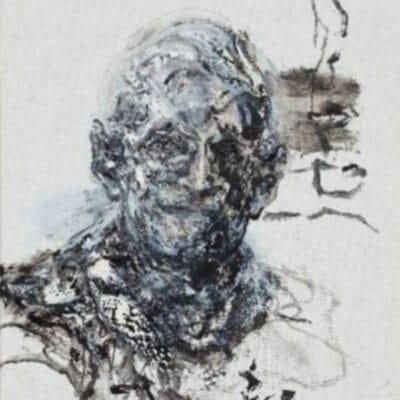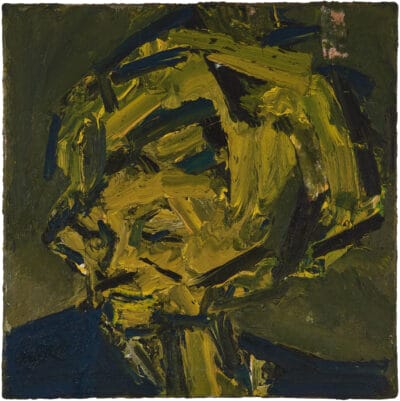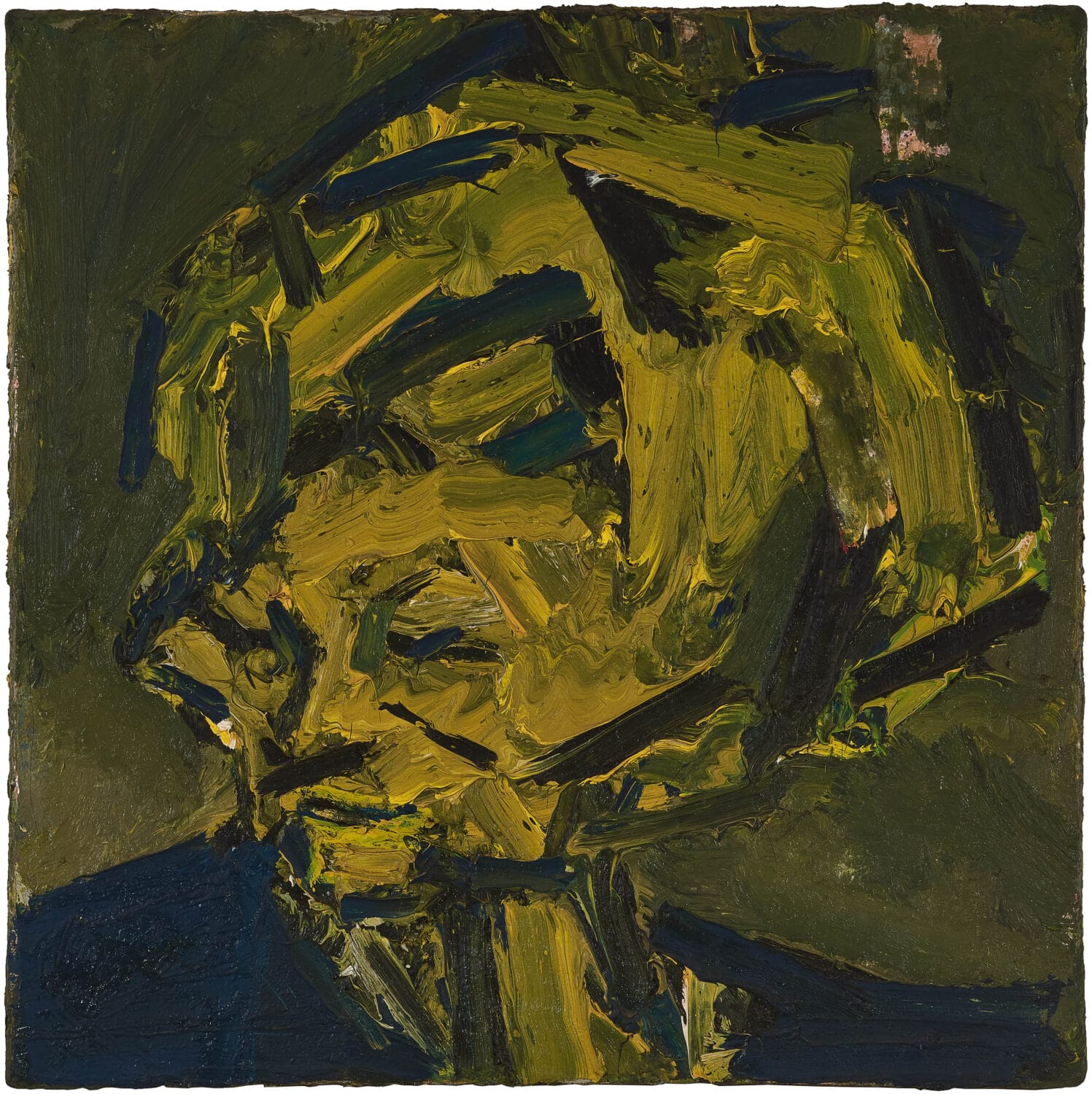
(New York) – For the 2022 edition of Art Basel Miami Beach, Marlborough is pleased to present an exhibition focusing on three artists from successive generations whose lives and practices have intersected. Works by Maggi Hambling, Frank Auerbach, and Francis Bacon are brought together to underline the affinities–and the divergences–between them. Portraits by Hambling, which have never been seen before in the United States, will form the presentation’s core.
Booth highlights include Bacon’s male nude Man at a Washbasin (1989-90), revisiting a central subject throughout Bacon’s oeuvre. Presenting a bodily figure in pinkish-purple flesh, the work is said to reference figure studies from Eadweard Muybridge’s photography book The Human Figure in Motion, mostly of boxers, which appealed to Bacon, an avid connoisseur of modern boxing photographs. Shown here alongside Hambling’s latest self-portraits–in which her image appears on the point of dissolution– the works perform a vivid dialogue between each artist’s distortive renderings of the human form.
The presentation also includes portraits capturing several of Hambling’s relationships, notably with Henrietta Moraes, the former “Queen of Soho.” Moraes, who herself had been the subject of numerous paintings by Bacon in the 1950s and 60s, became a muse to Hambling in her final years. In portrayals of Moraes and others, Hambling channels a stark corporeality–a dual intimation of aliveness and death. In Laughing (2018), the image of a man on the brink of laughter conjures an eruptive, ambiguous energy. A recent picture, Dancing Bear (2020-21), suggests an oblique self-portrait, with the chained animal becoming a vector of anger, pain, and fear.

At an early stage, Hambling absorbed Bacon’s concern with the real. She regularly encountered his paintings in the 1960s as a student at Camberwell College of Art and was struck both by their lurking eroticism and their application of paint in vigorous swathes. One of her first meetings with Bacon was at Benton End, the avant-garde art school in rural Suffolk that she attended as a teenager. Just a few years earlier, in 1958, Marlborough Fine Art in London had offered Francis Bacon a ten-year contract for exclusive representation, setting a pattern for relationships that the gallery would seek to develop with some of the leading British artists of his generation, including Frank Auerbach. Auerbach and Hambling would each remain close friends of Bacon until his death in 1992.
Much like Hambling’s portraits, Auerbach’s organic yet unified forms are deeply rooted in capturing the essence of a person or place and are often renditions of people he knows well or of the urban landscapes near his London studio. Here, in works such as Tower Blocks, Hampstead Road (2007), and Head of Gerda Boehm (1967), his oil paintings reveal an intense observation of these subjects; Auerbach makes each mark with authority and finality, pushing abstraction to the limit while still capturing the very quintessence of his sitters.
Setting the work of Hambling, Auerbach, and Bacon in dialogue, the display demonstrates how each artist has pursued the idea of portraiture and landscape as metamorphic forces. In the examples on view, each artist employs the figure to articulate unique, expansive styles that are often on the brink of abstraction. Taken together, we see that each artist is present in the work of the other–and not simply in the traditional sense of “influence.” Offering a succession of snapshots of figurative art across the 20th and 21st centuries, the display will also present a sequence of “lenses” through which each artist may be viewed anew: visitors will be invited to consider how Hambling, Bacon, and Auerbach inspire new readings of one another.
